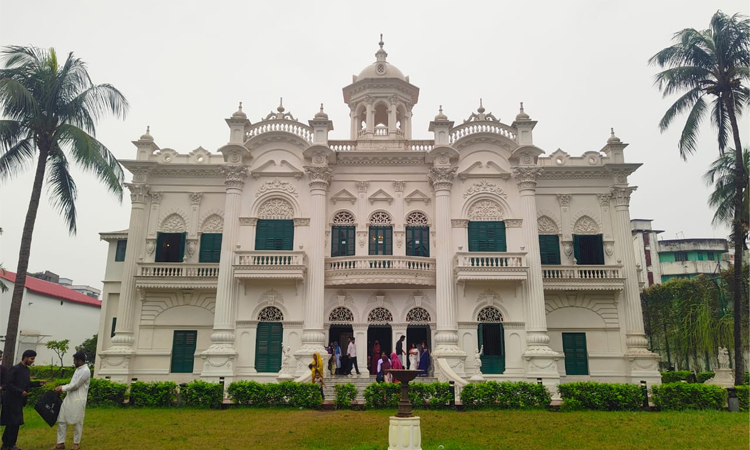News Flash

Mahamudur Rahman Nazid
DHAKA, Sept 19, 2025 (BSS) - Amid the narrow lanes, traffic congestion, dust, makeshift shops and the constant buzz of Old Dhaka, stands the main gate of a historic mansion. The signboard simply reads: Rose Garden. At first glance, it may sound like the name of a flower nursery, but it is in fact one of the most remarkable heritage houses in Dhaka.
Located on KM Das Lane in Tikatuli, Old Dhaka, Rose Garden is a garden house with a fascinating past. Its story dates back to the late 19th century. In 1930, Rishikesh Das, a wealthy businessman of the British era, brought rose saplings from China, India, Japan, and several European countries and planted them here, earning the house its enduring name.
Rishikesh Das was a self-made man who grew up in an ordinary family. Lacking the social acceptance of Dhaka's old aristocracy, he once attended a show at the garden house of Zamindar Narendra Narayan Roy Chowdhury, only to be insulted and humiliated. Determined to take revenge, he vowed to build a grander house of his own - and thus Rose Garden was born.
The mansion was built on 22 bighas of land, with a two-story house surrounded by rare rose gardens. In 1936, Rishikesh Das sold the property to businessman Khan Bahadur Kazi Abdur Rashid, who renamed it Rashid Manzil, though the name Rose Garden continued to be popularly used. Later, the house passed to his elder brother, Kazi Humayun Bashir, and became known locally as Humayun Saheb's house.
In 1970, Bengal Studio and Motion Pictures Limited leased the property, and in 1989, the Department of Archaeology declared it a protected heritage site. After a court case, ownership went to Kazi Abdur Rakib in 1993, and subsequently to his wife, Laila Rakib. Finally, in 2018, the Bangladesh government purchased the building for Taka 331.7 crore, officially preserving it as a historical monument.
Today, the Rose Garden dazzles visitors with its Greek-style white mansion, ornate carvings on ceilings, doors, pillars, and windows, and elegant floor mosaics. The estate still boasts a large pond with paved ghats, artificial fountains, white stone statues, and a landscaped garden filled with seasonal rose blooms. The furniture in its rooms retains the grace of a bygone era, offering visitors a glimpse into Dhaka's aristocratic past.
The site is open to visitors from 11 a.m. to 6 p.m. every day except Sundays (and half-day on Mondays). Entry costs Taka 30. The mansion attracts both domestic and foreign tourists, who often pose for photos in front of the grand palace, next to fountains, and by the pond.
Visitors can reach Rose Garden easily by rickshaw from Gulistan or Paltan for Taka 80-100, or from Motijheel. The location is also available on Google Maps.
Speaking to BSS, Raisa Islam, a student of Jagannath University who recently visited the garden with friends, said: "The environment here is wonderful. Despite the noise outside, inside you feel as though you've stepped back into the past. It's rare to find such a beautiful and serene place in the middle of Dhaka."
Another student, Zahidur Islam Rifat, shared his experience: saying "People usually visit Lalbagh Fort or Ahsan Manzil when exploring Old Dhaka. But Rose Garden is just as fascinating - perhaps even more so. I first saw it on Facebook, but it's far more impressive in person."
With its unique history, architectural beauty, and lush gardens, Rose Garden remains one of Dhaka's most enchanting heritage destinations.